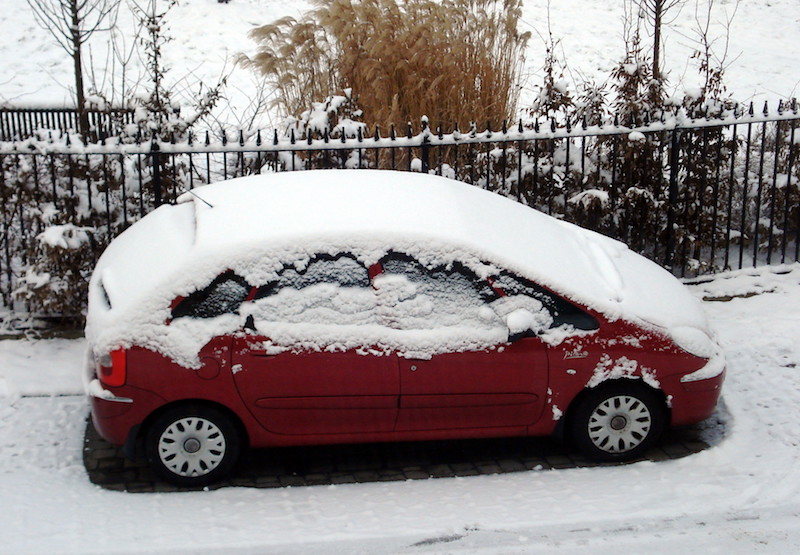As the weather dips below freezing, your gas mileage can drop as much as 22 percent for a gas-powered vehicle and 34 percent for a hybrid or electric vehicle.
According to the Environmental Protection Agency (EPA), cold weather affects your vehicle in more ways than you might expect. For example:
- It takes longer for your engine to reach its most fuel-efficient temperature. This affects shorter trips more, since your car spends more of your trip at less-than-optimal temperatures.
- Warming up your vehicle before you start your trip lowers your fuel economy. Idling gets 0 miles per gallon.
- Colder air is denser, increasing aerodynamic drag on your vehicle, especially at highway speeds.
- Engine and transmission friction increases in cold temperatures due to cold engine oil and other drive-line fluids.
- Heated seats, window defroster and heater fans use additional power.
- Tire pressure decreases in colder temperatures, increasing rolling resistance.
- Winter grades of gasoline can have slightly less energy per gallon than summer blends.
- Battery performance decreases in cold weather, making it harder for your alternator to keep your battery charged. This also affects the performance of the regenerative braking system on hybrids.
- In severe winter weather, your mpg can drop even further. Icy or snow-covered roads decrease your tires’ grip on the road, wasting energy.
- Safe driving speeds on slick roads can be much lower than normal, further reducing fuel economy, especially at speeds below 30 to 40 mph.
- Using four-wheel drive uses more fuel.
To get the best fuel economy, try these tips from the EPA:
- Park your car in a warmer place, such as your garage, to increase the initial temperature of your engine and cabin.
- Combine trips when possible so that you drive less often with a cold engine.
- Minimize idling your car to warm it up. Most manufacturers recommend driving off gently after about 30 seconds. The engine will warm up faster being driven, which will allow the heat to turn on sooner, decrease your fuel costs, and reduce emissions.
- Don’t use seat warmers or defrosters more than necessary.
- Check your tire pressure regularly.
- Use the type of oil recommended by your manufacturer for cold weather driving.
- When not in use, remove accessories that increase wind resistance, like roof racks.
- If you drive a plug-in hybrid or electric vehicle, preheating the cabin while plugged into the charger can extend your vehicle’s range.
- If you drive a plug-in hybrid or electric vehicle, using the seat warmers instead of the cabin heater can save energy and extend range.
Photo: James Clay / CC

Wow. Thanks for the thorough (and obvious) reminders.
this is very useful information about car fuel efficiency in the cold weather. This information will help me to increase car fuel efficiency. Thanks for the information.
As I am using plug-in hybrid, this blog helps me to increase my fuel efficiency more.
Thank you for sharing your ideas with us.